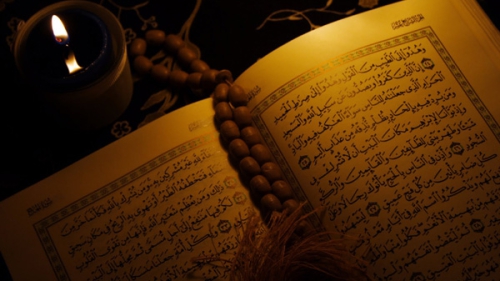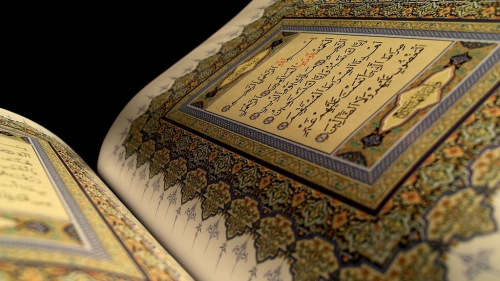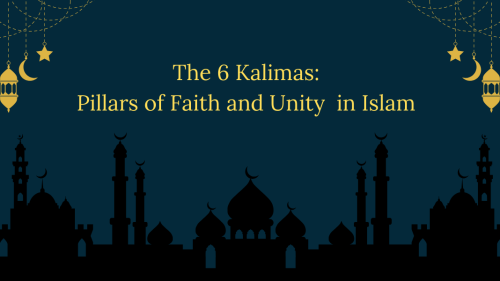Building as an Indispensable and Creditable Activity

Humans are not the only creatures that build. Many a creature that we classify low down the hierarchy of the animal kingdom, such as bees, spiders and ants, build elaborate structures. However, it has been suggested that it is awareness and imagination that single out humans as superior to other animals in architectural output. While the rest of creation act on the environment instinctively with no reasoning or training - as preordained by Allah, the Creator of the universe - man does the same willingly and at his own discretion. Since his actions are preceded by thinking and rationalizing, man clearly demonstrates through acts of building -- and through every other engagement of his, indeed -- his philosophy of and outlook on life and its manifold realities. The relationship between the two, i.e., one's outlook on life and the disposition of man's acts -- including building -- is causal, the former always being the cause of the latter. No sooner does a paradigm shift occur in one's worldview -- no matter how (in) significant -- than a corresponding change accordingly ensues in the very essence and character of one's performances, thus revealing and immortalizing one's actual relationship with his self, with his peers, with other creatures and, of course, with his Creator and Lord.
Erecting buildings in Islam rests within the category of permissibility ('ibahah). It remains as such so long as something does not come about causing it to infringe some of the divinely-prescribed norms, hence renders it either detestable (makruh) or prohibited (haram). However, if observing the objectives of the shari'ah, i.e., preservation of religion, self, mental strength, progeny and wealth, is thus meant to be realized, the whole matter then turns highly praiseworthy and so correspondingly rewarding. In other words, erecting buildings becomes part of one's worship ('ibadah) whereby one duly discharges some of the duties entrusted to him as a vicegerent on earth. About this Allah the Almighty says that He has created both Jinns and men only that they may worship and serve Him (al-Dhariyat 56).
On coming to this world and on becoming a member of an intricate macro web comprising different worlds and life forms, man did not need much time to understand that building as an art accounted for one of the necessary requirements for man's cultural and civilizational growth, if not for his bare survival. According to the Islamic tawhidic worldview, constructed buildings are meant not only to meet some of the necessary requirements in relation to man's existence on earth, but also to facilitate, foster and stimulate his ceaseless 'ibadah (worship) practices entrusted to him by his Lord, so as to help man elevate his status to a dignity above other creation and to honorably live up to his reputation as the steward of creation. As a result, the forms, designs, and functions of the buildings created by true Muslims are normally inspired by Islam, are permeated with its undying spirit, and stand for the embodiment of the Islamic fundamental principles and values. Given that such buildings symbolize a bodily locus of their daily individual, family and social activities, the Islamic built environment assists greatly in making the lives of Allah's righteous servants a sweet song of praise to Him. The built environment functions as facilities to men in executing their earthly vicegerency mission. Hence, it goes without saying that central to the Islamic view of building activities is the all-encompassing functions and utility of the constructed edifices. The overall physical appearance is inferior and matters only when it comes into complete conformity with the aforementioned criterion.
When the followers of Islam create a built environment, they thus create a physical locus of the meanings, messages, injunctions and guidelines of Islam, which Allah has presented to men in order that their lives become divinely inspired and regulated. Islam is a complete way of life. It is to be fully internalized and practiced by its followers at all levels of existence. Since the built environment is a framework for all human activities, the Islamic built environment is a framework where Islam is clearly defined and then actualized at the hands of its adherents via their daily practices that delineate their relationship with people, nature and Allah. The built environment thus frames, so to speak, the fundamental nature of Islam revealed to men, inasmuch as it is nigh on impossible to imagine a permanent human activity that is totally separated from the confines and influences of the built environment's realm.
In view of the fact that the Islamic built environment exists in order to satisfy the requirements of Islam, either directly or indirectly, by satisfying the life requirements of those whose lifestyles stem from and reflect the ideology, teachings and values of Islam, it is Islam that holds sway over the quintessence of the built environment of the Muslims shaping its distinctive identity. It is never the opposite, that is to say, people's self-regulating thinking paradigms and building styles do not hold sway over the religion and worldview of Islam. The Islamic built environment exists because of Islam; it is not the other way round.
There was no Islamic built environment prior to the arrival of Islam. Islam is a cause; the Islamic built environment with all of its corporeal diversity is an effect. Islam is the sole source that furnishes the Islamic built environment throughout the world with both its essence and identity, rendering the indigenous geographical, climatic, social and other inherited factors and features rather ancillary. Undeniably, such is the power of Islam that it presides over every act, word and thought of its adherents. Anything short of this signifies nothing but a deficiency in faith. It is thus very appropriate to identify a built environment where the spirit of Islam is a dominant factor, as "Islamic". It is just as appropriate to do the same in relation to any dimension of the same built environment universe where a majority of the foremost Islamic principles and teachings are observed and duly applied. Hence -- and rightly so -- we frequently hear about such designations as "the Islamic city", "Islamic urbanism", "the Islamic house", "Islamic art and architecture", etc.
Having said all this, it follows that it is grossly inappropriate to use the adjective "Islamic" before such entities or phenomena as only partly and superficially represent the Islamic doctrine and its value system. Such may lead to confusion and the creation of myriad misconceptions about Islam and its peoples. It is inappropriate, for example, to advance such concepts as "Islamic tiles", "Islamic patterns", "Islamic costume", "Islamic door", "Islamic window", "Islamic color", and so on.
In his Art of Islam, Titus Burckhardt wrote that it is not surprising, nor strange, that the most outward manifestation of Islam as a religion and civilization reflects in its own fashion what is most inward in it. The same author further remarked that "if one were to reply to the question 'what is Islam?' by simply pointing to one of the masterpieces of Islamic art such as, for example, the Mosque of Cordova, or that of Ibn Tulun in Cairo, or one of the madrasahs in Samarqand....that reply, summary as it is, would be nonetheless valid, for the art of Islam expresses what its name indicates, and it does so without ambiguity." Seyyed Hossein Nasr, in a similar fashion, also stated that the great masterpieces of Islamic art and architecture anywhere in the Muslim world "represent directly not only the spirit of Islamic revelation but the very essence of that spirit and in a sense provide the most direct and visible answer to the question, 'What is Islam?'"
The Prophet (pbuh) once stated that the vision of a believer is a unique one in that he observes through (with) the Light of Allah. Attaining this vision and observing things and events through (with) the Light of Allah, surely, is an ultimate condition which Islam aims to create in its followers. Once they attain that condition, such people will then aspire to see and hear only that which is proper and good, to say and do only that which is moral and upright, and to contemplate only that which is right and beneficial.
About this, al-Bukhari related on the authority of Abu Hurayrah who said that the Prophet (pbuh) said that Allah said: "My servant draws not near to Me with anything more loved by Me than the religious duties I have enjoined upon him, and My servant continues to draw near to Me with supererogatory works so that I shall love him. When I love him I am his hearing with which he hears, his seeing with which he sees, his hand with which he strikes and his foot with which he walks. Were he to ask [something] of Me, I would surely give it to him, and were he to ask Me for refuge, I would surely grant him it. I do not hesitate about anything as much as I hesitate about (seizing) the soul of My faithful servant: he hates death and I hate hurting him". According to another version of the same tradition, it has been added that: "...(I am also) his heart with which he perceives, his tongue with which he speaks..."
Certainly, herein lies the actual importance of the Islamic built environment, in the sense that it not only meets the requirements of living the Islamic lifestyle by just enveloping or framing it, but also by facilitating it, as well as promoting its worth and encouraging the Islamic built environment users and observers to give such a lifestyle its due consideration and respect. The Islamic built environment is both a field for the implementation of Islam and a vehicle for its promotion and advancement. This is done at all planes of the built environment: its perception, ingenious visualization, aesthetics, planning, execution and utilization. This is done, furthermore, through inspired and innovative practical plans, designs and structural solutions, which, as a matter of fact, can never be exhausted due to the countless opportunities presented by the integration of the Islamic religion into all life's segments, or by the unison between the material and spiritual domains, between the utilitarian and aesthetic needs of people, and between the heavens and the earth. The Islamic built environment is a style that glorifies Allah and His revelation. Likewise, it humbles man in his capacity as a worldly creature fashioned from clay, whose total reliance on his Creator and Master is unquestionable. At the same time, however, it celebrates man's honorable position as Allah's vicegerent on earth; it celebrates man's consecrated and blessed life purpose and mission. The Islamic built environment strikes a subtle and fine balance between the two poles. It strikes a balance between man's burning innate longing for the heavens and the inevitability of making the most of whatever is necessary from the terrestrial phase of existence in order to achieve the former.
*****
Dr. Spahic Omer, a Bosnian currently residing in Malaysia, is an Associate Professor at the Kulliyyah of Architecture and Environmental Design, International Islamic University Malaysia. He studied in Bosnia, Egypt and Malaysia. His research interests cover Islamic history, culture and civilization, as well as the history and philosophy of the Islamic built environment. He can be reached at spahico [@] yahoo.com; his blog is at www.medinanet.org.
Topics: Islam, Nature And Environment
Views: 3262
Related Suggestions

















